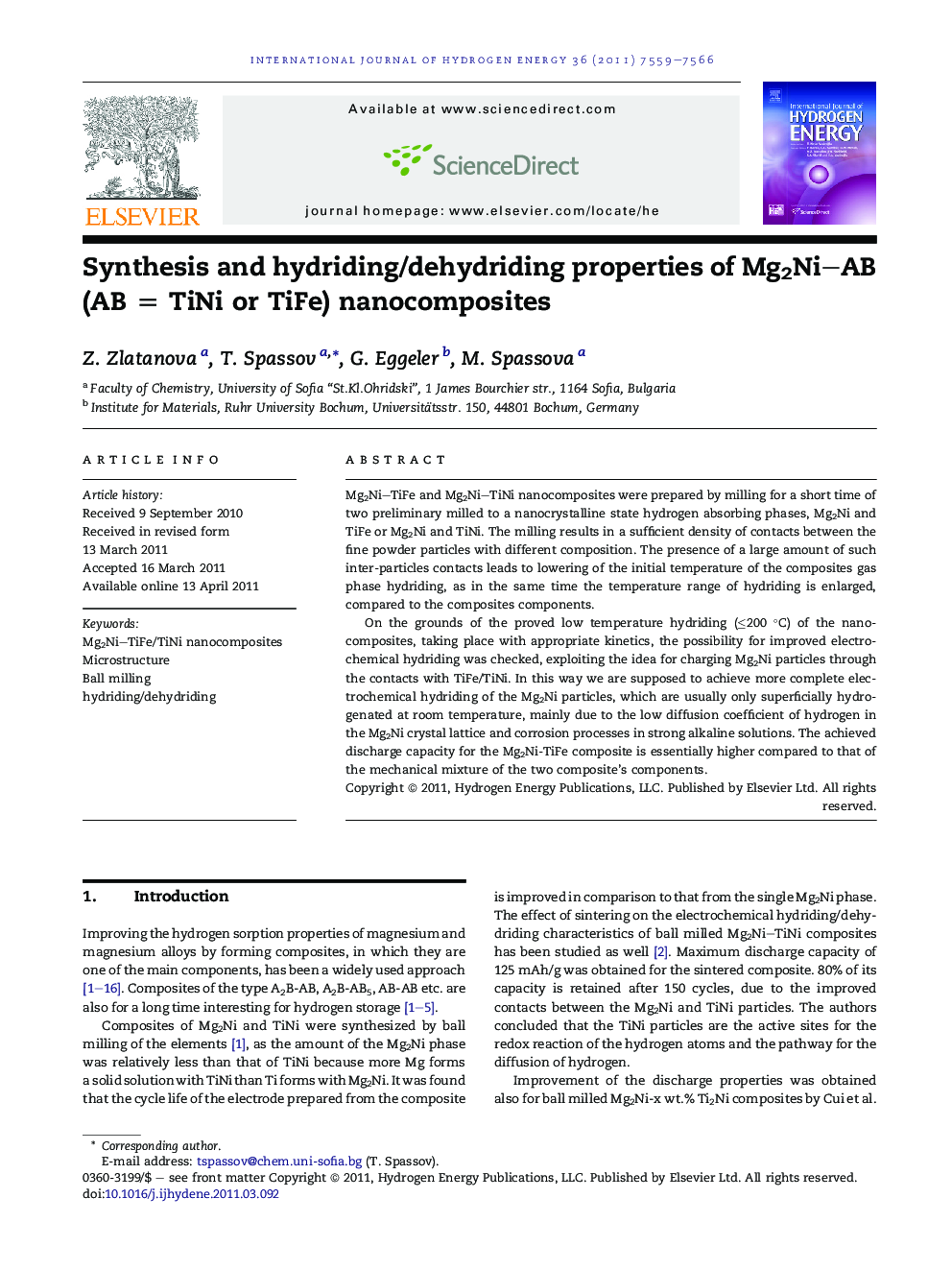| کد مقاله | کد نشریه | سال انتشار | مقاله انگلیسی | نسخه تمام متن |
|---|---|---|---|---|
| 1279282 | 1497580 | 2011 | 8 صفحه PDF | دانلود رایگان |

Mg2Ni–TiFe and Mg2Ni–TiNi nanocomposites were prepared by milling for a short time of two preliminary milled to a nanocrystalline state hydrogen absorbing phases, Mg2Ni and TiFe or Mg2Ni and TiNi. The milling results in a sufficient density of contacts between the fine powder particles with different composition. The presence of a large amount of such inter-particles contacts leads to lowering of the initial temperature of the composites gas phase hydriding, as in the same time the temperature range of hydriding is enlarged, compared to the composites components.On the grounds of the proved low temperature hydriding (≤200 °C) of the nanocomposites, taking place with appropriate kinetics, the possibility for improved electrochemical hydriding was checked, exploiting the idea for charging Mg2Ni particles through the contacts with TiFe/TiNi. In this way we are supposed to achieve more complete electrochemical hydriding of the Mg2Ni particles, which are usually only superficially hydrogenated at room temperature, mainly due to the low diffusion coefficient of hydrogen in the Mg2Ni crystal lattice and corrosion processes in strong alkaline solutions. The achieved discharge capacity for the Mg2Ni-TiFe composite is essentially higher compared to that of the mechanical mixture of the two composite’s components.
Journal: International Journal of Hydrogen Energy - Volume 36, Issue 13, July 2011, Pages 7559–7566